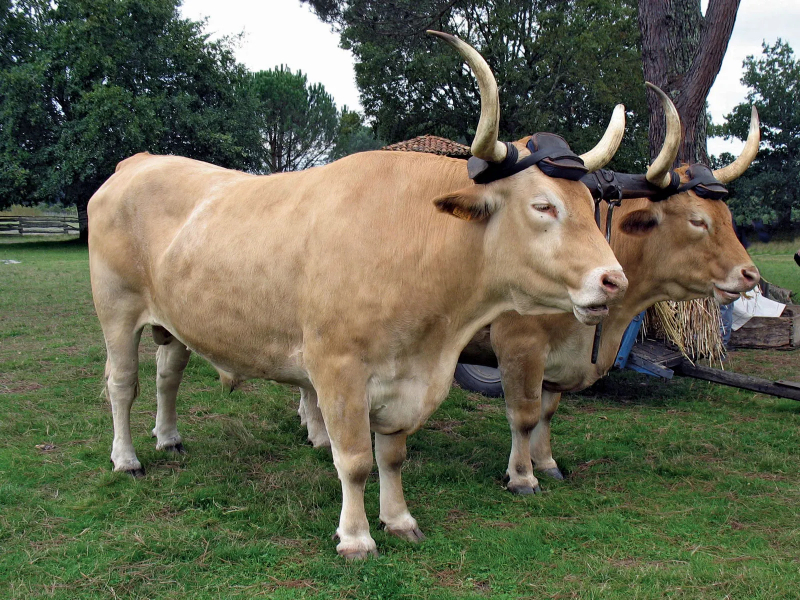Oxen
Recognized as among the most prevalent animals commencing with the letter "O," Oxen, domesticated cattle belonging to the genus Bos, have been integral to human history and agriculture for millennia. Renowned for their strength, endurance, and gentle temperament, oxen have served as indispensable collaborators in diverse cultures globally. They have offered crucial support in activities such as plowing fields, hauling heavy loads, and serving as a reliable source of milk, meat, and leather.
The term "ox" typically refers to a castrated male bovine used for draft purposes. The castration process not only makes the animals more manageable but also enhances their strength and endurance. Oxen are often associated with yoked pairs working in tandem to perform tasks such as plowing fields, hauling timber, or transporting goods. The use of oxen in agriculture has been a traditional practice in many cultures, contributing significantly to the development of farming communities.
One of the notable characteristics of oxen is their immense physical strength. Their robust build, powerful muscles, and well-developed shoulders make them well-suited for pulling heavy loads. The use of a yoke, a wooden crosspiece fitted on the necks of a pair of oxen, allows them to distribute the weight of the load evenly and work together efficiently. Oxen are particularly well-adapted to perform tasks in challenging terrains where other forms of machinery may be impractical.
Beyond their role as draft animals, oxen have been valued for their versatility. In addition to their use in agriculture, oxen provide other essential resources. They serve as a source of meat, and their hides are utilized for leather production. Additionally, oxen can be milked, providing a steady source of dairy products.
While oxen have been crucial to the development of agriculture and human societies, their role has evolved with advancements in technology. In modern times, tractors and machinery have largely replaced oxen in many industrialized agricultural systems. However, in certain regions and for specific agricultural practices, oxen continue to be employed, especially in small-scale and sustainable farming.
















